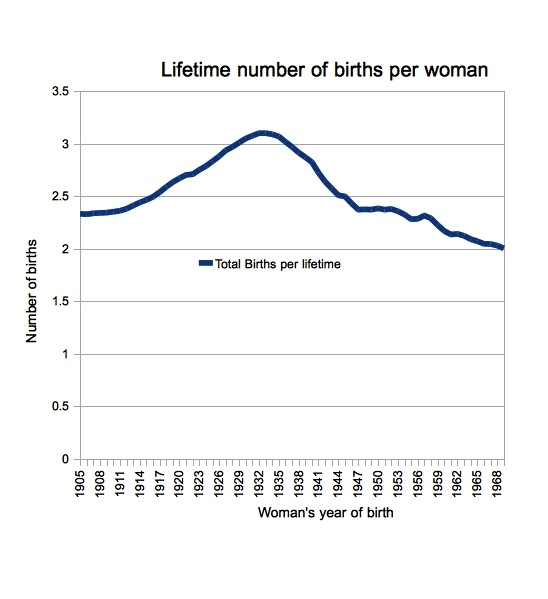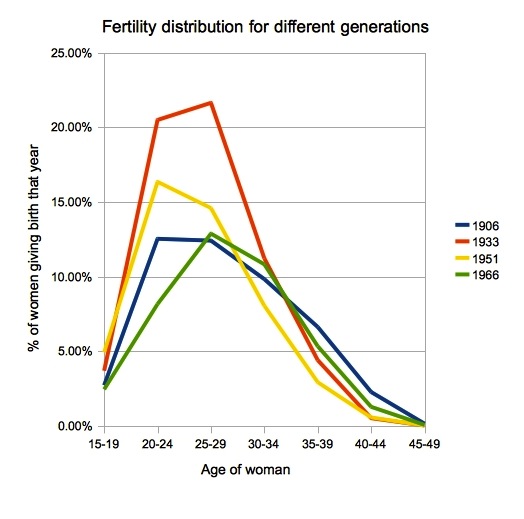Last month, the annual fertility rates were released by the ABS. I last did a post on this two years ago, so it is time for an update.
My broad conclusion was that fertility rates are pretty stable in Australia, with the very important caveat that that stability is in the number of children the average woman has in her lifetime, not necessarily how old she is when she has them.
So first, the headline. In the last two years, the total fertility rate for Australia (which represents the average number of babies that a woman could expect to bear during her reproductive lifetime, assuming current age-specific fertility rates apply) has dropped from 1.97 in 2008 to 1.89 in 2010. That is a reasonably significant drop (nearly 0.1 of a child!).
But the movement in the headline fertility rate is always much more than the movement in the average fertility for a woman over her lifetime. Below, you can see that the lifetime fertility rate for women this century has stayed quite stable.

Women born in 1933 had the most children, on average – 3.1 in total. But women born in 1966 (the most recent date for whom lifetime projection is reasonable) are expected to have 2.05 babies, on average, over their life.
So why does the headline rate move around so much? It is all to do with when women have their babies. Those women born in 1933 had already had two of their children by the age of 28. In another three years, on average, they’d had another half a child. In contrast, the woman born in 1966 had had one child by the time she got to 28. And it took her until the age of 33 to have the next half a child (on average). But she was still having children in her late 30s and 40s – she was having 50% more children then than her mother’s generation 30 years earlier.
This graph shows that effect.

Interestingly, the generation from 1906 shown in this graph is much more similar to that woman born in 1966. While the woman born in 1906 had more children in her twenties than her granddaughter’s generation, she kept having them well into her late 30s and 40s, even more than women who are that age now.
Every year the news of the latest statistics gives rise to articles like this one, pointing out that Australia is in danger of not reproducing its population. But while we do seem to be dropping under replacement rate slightly, the bigger news is the change in the age of most parents – that’s the main message from this year’s statistics.

Is there a correlation of say how developed a country is or the education level of a country and the birth rate? Seems that as countries get more affluent/educated, people have less kids (and have it later) to focus on career/lifestyle etc. Also is the cost of child care a factor? I can’t believe the cost of child care these days!
Would be interesting to follow up on the increasing multiculturism of the population (where different backgrounds may influence the birth rate).
http://www.google.com/publicdata/explore?ds=d5bncppjof8f9_&ctype=b&strail=false&bcs=d&nselm=s&met_x=sp_dyn_le00_in&scale_x=lin&ind_x=false&met_y=sp_dyn_tfrt_in&scale_y=lin&ind_y=false&met_s=sp_pop_totl&scale_s=lin&ind_s=false&dimp_c=country:region&ifdim=country&tunit=Y&pit=1298811600000&icfg&iconSize=0.5